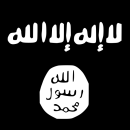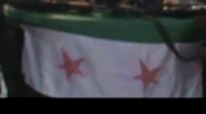Signs Beyond Western Eyes: Unpacking The Announcement of the al-Bara’ ibn Malik Martyrs Brigade
This past Thursday, on February 16, a group of around twenty individuals claiming to be part of the Free Syrian Army (FSA), released a video message to YouTube announcing the formation of a new battalion named the al-Bara’ ibn Malik Martyrs Brigade. It should be noted that during the Iraq war, al-Qa’ida in Iraq (AQI) also named one of their battalions the al-Bara’ ibn Malik Martyrs Brigade. There is no definitive proof that the new battalion established by the FSA is connected with the old al-Qa’ida in Iraq networks. That said, one should be cognizant of the expansive facilitation networks there were for foreign fighters attempting to join the Iraq jihad in Syria.
There are many layers to unpack from the video itself as well as the name chosen for the martyr brigade and its potential illusions.
With the recent revelations that al-Qa’ida was allegedly behind a series of suicide bombings in Syria over the past few months, along with Ayman al-Zawahiri’s recent video giving support to the Syrian “mujahidin;” much worry has risen over the specter of al-Qa’ida influencing and/or hijacking the opposition movement in Syria that hopes to topple Bashar al-Asad and his current regime.
The Flags
Many will point to the flag in the background used in the above video as a sign that these individuals are indeed al-Qa’ida since it looks strikingly similar to the one used by al-Qa’ida’s Islamic State of Iraq (For more background on al-Qa’ida’s use of flags and its context in Islamic history read here):

FSA background flag

Islamic State of Iraq's flag.
Indeed, it is a worrying sign. At the same time, one should also note that in the above video, they also bear the old Syrian flag:

As such, for any student of al-Qa’ida and jihadism, the use of a Syrian flag shows direct support of a nationalist project, which is contrary to al-Qa’ida’s worldview. This is because the nation-states carved out were established not by God, but rather by the British and French. From this, one could posit that the al-Qa’ida looking flag used in the above video has become popularized to a broader audience then just a global jihadist one. More specifically, “the Che Guevara-ing” of the flag insofar as it has just become a symbol of resistance than necessarily a sign that the group has allegiance to al-Qa’ida. At the same time, the name used for the martyrs brigade (as AQI did, too) may abrogate or disprove this potential theory.
Who is al-Bara’ ibn Malik?
Prior to discussing the significance of the name of the martyrs brigrade in the context of al-Qa’ida, it is worthwhile to delve into the figure al-Bara’ ibn Malik to try and better understand why the FSA (and AQI) would invoke this figures name. Ibn Malik was one of the Muslim prophet Muhammad’s sahabah (companions) and considered an ansar (supporter) from the tribe of Banu al-Khazraj since they established relations with Muhammad’s nascent movement of mu’minin (believers) following the hijra to Medina (originally Yathrib). Ibn Malik is the brother of the famous sahabi Anas ibn Malik, an aide to Muhammad and who is one of the major narrators of hadith.
al-Bara’ ibn Malik originally took part in the Battle of Yamamah, which was part of the Riddah (apostasy) wars following the death of the Muslim prophet Muhammad. After the ascension of Abu Bakr as-Sadiq as the first Caliph some tribes and individuals apostatsized from Islam and attempted to return to their original religious practices. Abu Bakr called for war against them leading to a series of battles in 632-634 CE/11-13 H. The Battle of Yamamah is most famous for the deaths of a large portion of Qur’anic reciters, which led Abu Bakr to start the codification of the Qur’an into a written mushaf, since beforehand the Qur’an was recited orally. In the latter part of the Battle of Yamamah, when the opposition forces led by Musaylimah (referred in Islamic historiography as al-Kadhab or the Liar) were beginning to lose the battle they hid behind a gated garden. Prior to launching an assault on the garden, al-Bara’ ibn Malik stated: “يا أهل المدينة، لا مدينة لكم اليوم، إنما هو الله، والجنة” or “Oh People of al-Madinah, there is no al-Madinah for you after this day. There is only Allah, then Paradise.” Ibn Malik was hoisted upon a fellow soldiers shield to try and jump over the gate, which he succeeded. He sustained wounds, but was able to break open the gate allowing the rest of the Muslim army to defeat Musaylimah’s men. The episode would later refer to the “Garden of Death.” Although Ibn Malik had injuries, he recovered and later fought and was “martyred” in the Battle of Tustar against the Persian Empire in 640 CE/19 H.
There are three key points that should be highlighted from the above description of al-Bara’ ibn Malik: (1) he had an important role in defeating “apostates;” (2) his quote from above shows his willingness for martyrdom in the face of tough odds; and (3) he fought against the Persian Empire, which although Persians were not Muslims or Shi’a for that matter at that time one can imagine the symbolism of Ibn Malik fighting against the Persians. Jihadis today describe Shi’a (many being Persian) today as rawafid (Dissenters/Defectors/Deserters), which is a derogatory term, and do not believe they are true Muslims.
Contextualizing al-Bara’ ibn Malik Martyrs Brigades Today
Returning to the modern context, in both cases (AQI and the FSA), the name of the martyrs brigade fits and alludes to the three points made above regarding the biography of Ibn Malik. Regarding the first point, in both Iraq and Syria the fighters believe they are fighting apostate regimes. In Iraq against the ascendent Shi’a Mahdi Army and newly formed majority Shi’a Iraqi government and in the case of Syria al-Asad’s Alawite regime (seen as a sect of Shi’a Islam and viewed as heretical by even non-jihadi Sunni Muslims). As for the second point, it is quite obvious that they are martyrdom brigades and are therefore willing to sacrifice themselves in the face of great odds. And thirdly, the Iranian government was viewed in the Iraq war as assisting the Shi’a militias, while in the current context in Syria, the al-Asad regime is a known proxy of the Iranian regime. As such, in a round about way, in both the Iraq and Syrian versions of the al-Bara’ ibn Malik Martyrs Brigades they would be fighting the “Persian Empire” similar to Ibn Malik himself.
General Concluding Remarks About the Current State of Jihadism in Syria
The establishment of the FSA’s al-Bara’ ibn Malik Martyrs Brigade should give pause to talk of blindly arming the FSA as an alternative to the failed resolutions in the UN Security Council. That said, it is believed the FSA is a loose confederation without much centralization and therefore this battalion is most likely independent and doing its own thing. With the news of the potential release of Abu Mus’ab al-Suri, the creation of a new local jihadi group Jabhat al-Nusrah, and reports of a foreign fighter from Kuwait being killed in Syria, it is clear Syria has become another important front in the jihadi war. The penetration of al-Qa’ida in Iraq into Syria and potential of foreign fighters arriving, should be watched closely. At the same time, ones support for the uprising to defeat the authoritarian al-Asad regime should not be looked at completely through the prism of al-Qa’ida nor should it preclude or discredit any attempts for supporting some elements within the opposition. There are certainly risks involved, but identifying and vetting elements within the Syrian opposition is something that needs to be further acted upon in a precise manner versus providing weapons haphazardly just because of horrific scenes of slaughter on YouTube that one views without fully thinking through the potential second and third order consequences.
